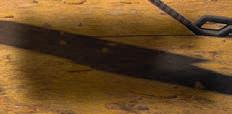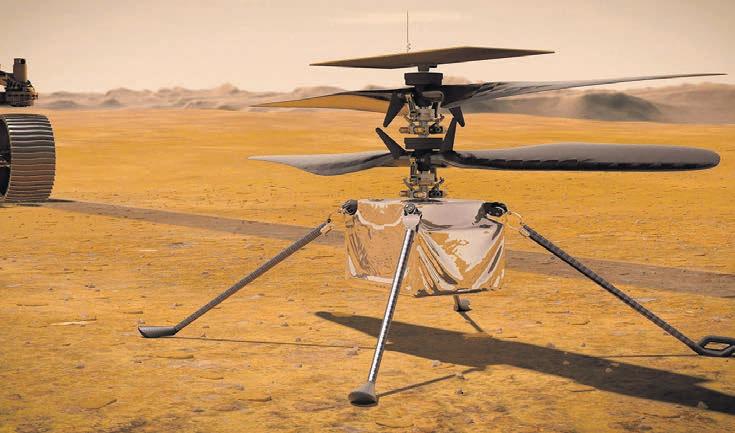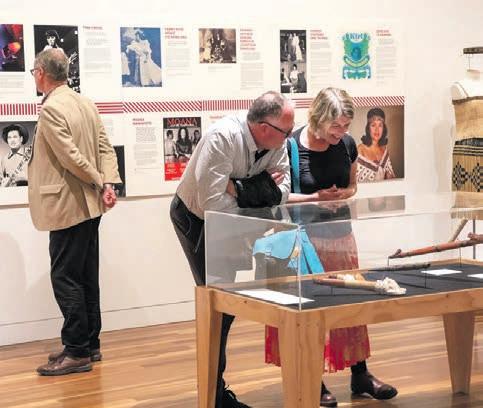
4 minute read
Extra


Why we need museums
Many people still think of museums as being a place where old forgotten things live out their fi nal days. But there is a strong case that museums are more relevant today than they have ever been before.
Nowadays, it is hard to ignore the escalating tension between nations and groups. If we cannot fi nd common ground, we cannot be sure of a peaceful future. Museums and in particular exhibitions can assist groups and communities in celebrating what make them unique.
Interestingly, in highlighting uniqueness, links are drawn between our similarities, be they common values, interests, or experiences. Knowledge and understanding are powerful weapons in the face of hatred and ignorance, and are essential for building strong communities.
Our country’s largest museums, have the infl uence to reach many and create a common ground or understanding on both a social and political level. But do not underestimate the role of smaller regional museums such as our Museum of Art and History, Aratoi, to

Visitors to the Pukana: Te Karu o te Ika – Moments in Maori performance exhibition in 2021. PHOTO/SUPPLIED
infl uence on a local scale.
Museums are able to provide a sense of community and place by celebrating a collective heritage and off ering a great way to get to know the arts, culture and history of a particular area As the world becomes more and more digitised and life becomes more complex, institutions such as Aratoi off er a welcome reminder of the achievements and discoveries located closer to home, bringing communities together.
The human experience is all about connection – to each other, to our environment, to our past, and to our future. Without access to art and culture, part of that connection is temporarily missing from our lives.
Aratoi Museum is hosting four diverse exhibitions, all with unique stories to tell. So let Aratoi become part of your learning journey and spend some time exploring our galleries.
• Aratoi is open Tuesday to Sunday 10-4pm, entry is free. More information about our present exhibitions can be found on our website www.aratoi.co.nz
SKY WATCH Chance to view the space station
The fi rst half of May is going to be dominated by the moon in the evening, and we won’t get those star-spangled Wairarapa nights until later in the month. However, before the moon really gets going there’s a couple of really good chances to see the International Space Station (ISS) at its best.
On this Friday (6th) get out somewhere dark just after 6pm. There will be a crescent moon, but it won’t be spoiling things. ISS will run across the southern sky while the moon sits in the norwest. ISS will come out of the twilight glow in the southwest – look near the southern end of the Remutakas at around 6.10. Within three minutes it will rise halfway up the southern sky, before disappearing above the eastern horizon three minutes later.
On Sunday 8th, the ISS will appear above the ranges again, but slightly further along towards the north. This will be at around the same time,
Sky Watch Nick Sault
6.10. On this occasion, the ISS will rise higher in the sky, passing by the brilliant star, Sirius, on its way to its highest point three and a half minutes later. It will then dip down to the northeast horizon, disappearing another three minutes later.
Both these ISS occurrences should be really bright, brighter than Sirius – the latter being the visibly brightest star in the sky. Fingers crossed for clear nights.
The next best show is
Nasa’s Mars Ingenuity Helicopter on the Martian surface. PHOTO/GETTY IMAGES
near the end of the month, and you will need to be up early. Just after 6am on Wednesday 25th you will catch the waning crescent moon in the northeast, where the sun is due to rise later. But take a closer look. Right close by the moon is planet Jupiter, and huddled even nearer to the moon is Mars. Towards the horizon is the ever-brilliant Venus, outshining them all, except the moon of course.
On the 27th, around 6am again, the now skinny moon will be sat right next to Venus. A little later in the morning, the moon will move across Venus (called an occultation). Unfortunately, it will be daylight by then and we won’t be able to witness that without considerable optical help.
Another two mornings later (29th) at around 6am, turn your attention back on Jupiter and Mars. As mentioned above, on the 25th the moon was hassling those two planets, but in the four days since, the moon is out of the picture. However, in those few days Jupiter and Mars are having their own conjunction. They might be even tighter together on the following morning at the same time.
The early morning planet show continues into June, but Venus will leave the party at the end of July, as it starts to trip around the sun.




